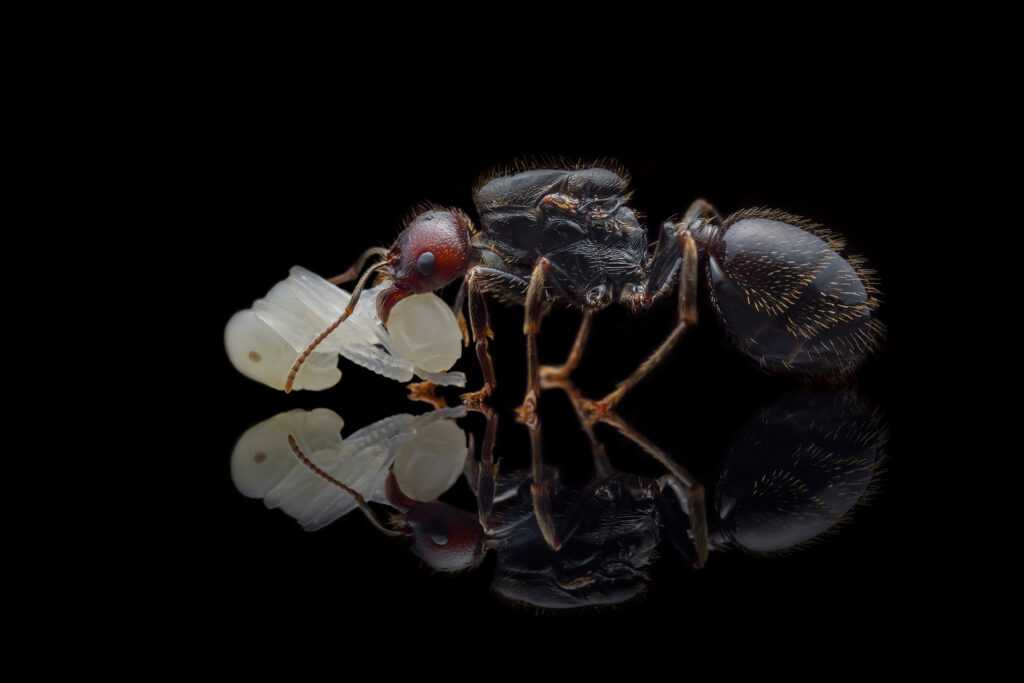Myrmecocystus mexicanus: The Fascinating Ant Species
If you are an enthusiast of ant keeping, you will undoubtedly find Myrmecocystus mexicanus to be a captivating addition to your collection. This species, commonly known as the Mexican honey ant, belongs to the genus Myrmecocystus and is renowned for its unique behavior and intriguing colony dynamics.
Colony Structure and Size
Myrmecocystus mexicanus colonies are monogynous, meaning they have a single queen. Monogyny facilitates a peaceful and harmonious social structure among the ants, allowing the queen to focus her energy on reproduction and ensuring the growth of the colony. With a colony size of approximately 10,000 workers, these ants are highly organized and efficient in their division of labor, making them a fascinating species to observe.
Physical Characteristics
Myrmecocystus mexicanus ants exhibit distinct physical characteristics that set them apart from other ant species. The queen, measuring between 14-16mm, is noticeably larger than the workers, which range from 5-10mm. The ants’ striking orange-yellow coloration adds to their visual appeal, making them a favorite among ant enthusiasts.
Nutritional Requirements
Proper nutrition is essential for the well-being and productivity of any ant colony, including Myrmecocystus mexicanus. These ants have a diverse diet that includes a combination of food insects such as cockroaches and crickets, as well as fruits, vegetables, and seeds. Offering a varied diet ensures the colony receives all the necessary nutrients for optimal growth and development. To learn more about ant nutrition, visit our ant nutrition page.
Humidity and Temperature Needs
Creating the ideal environment for Myrmecocystus mexicanus requires careful attention to humidity and temperature levels. Maintaining a humidity range of 40-60% in both the arena and nest areas ensures the ants can thrive and carry out their various tasks effectively. In terms of temperature, the arena should be kept between 23-30 °C, while the nest area should maintain a slightly lower temperature range of 22-25 °C.
The Distinctive Feature: Honey Ants
One of the most captivating aspects of Myrmecocystus mexicanus is their unique adaptation as honey ants. These ants have the ability to store excess food in specialized workers known as repletes. These repletes fill their bellies with carbohydrates, expanding to the size of grapes, and then hang upside down from the ceiling of their nest. This fascinating behavior allows the ants to survive food shortages and support the colony during lean times.
Recommended Nests for Breeding
When setting up a suitable habitat for Myrmecocystus mexicanus, consider the type of nest that will best facilitate their breeding and development. Acrylic, cork, plaster, and aerated concrete nests are highly recommended choices that provide the necessary stability and insulation for the ants’ overall well-being.
In Conclusion
Myrmecocystus mexicanus, the Mexican honey ant, is a truly captivating species to observe and care for. From their monogynous social structure to their distinctive honey storage behavior, these ants offer a unique and rewarding ant-keeping experience. By providing them with the right nutrition, humidity, temperature, and suitable nesting options, you can create an ideal environment for these fascinating creatures to flourish.
















Reviews
There are no reviews yet.